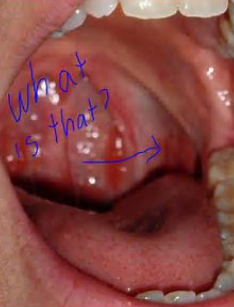The Chronic Fatigue Syndrome and HHV-6 Scientist of the Year
The scientist who deserves a Nobel Prize for his work on HHV-6 and Chronic Fatigue Syndrome.
https://www.uni-wuerzburg.de/en/news-and-events/news/detail/news/viruses-under-the-microscope/
Viruses Under the Microscope
Human herpesviruses such as HHV-6 can remain dormant in cells for many years without being noticed. When reactivated, they can cause serious clinical conditions. Researchers from Würzburg have now found a way of differentiating between active and inactive viruses.
Human herpesvirus 6 (HHV-6) infects almost all of the human population, but only very few will show any symptoms during their lifetime: HHV-6 is one of the most widespread viruses among the population. Between 95 and 100 percent of healthy adults have antibodies to the virus which means that they have been infected at some point in the past.
The virus hides in the genomic DNA
There are two types of the virus: HHV-6A and HHV-6B. HHV-6B primarily infects in infancy as sixth disease, whereas HHV-6A infections usually remain asymptomatic. After primary infection, the virus establishes lifelong latency by integrating with the cellular DNA.
The infection is generally harmless. Under certain circumstances, however, the virus can be reactivated – for example, after chlamydia infection, organ transplantation, immunodeficiency or when taking specific drugs.
Trigger of numerous diseases
While HHV-6 was long believed to have no negative impact on human health, scientists today increasingly suspect the virus of causing various diseases such as multiple sclerosis or chronic fatigue syndrome. Recent studies even suggest that HHV-6 might play a role in the pathogenesis of several diseases of the central nervous system such as schizophrenia, bipolar disorder, depression or Alzheimer's.
Dr. Bhupesh Prusty is responsible for these new insights. The scientist is a team leader at the Department of Microbiology of the University of Würzburg. Prusty has recently discovered a method which for the first time allows reactivation of human herpesvirus to be detected at an early stage.
MicroRNA molecules as markers
"Betaherpesviruses like human herpesvirus 6A, 6B and 7 integrate into subtelomeric ends of human chromosomes and acquire latency. This makes it difficult to recognize the early phase of viral activation based on an analysis of the viral DNA," Prusty points out the problem. Together with his team, the virologist has now discovered an alternative approach which could be a suitable biomarker for HHV-6 studies.
"We have identified several viral microRNA molecules which are produced both during active infection and viral activation," Prusty explains. MicroRNAs directly influence cell metabolism. The RNA assures the flow of genetic information from nuclear DNA into the cell where it is "translated" to proteins. The microRNAs have a regulatory function in this process. They can dock to RNA molecules and prevent them from being translated to proteins or initiate the degradation of RNA molecules. Prusty is certain that the detection of these viral microRNAs can serve as an ideal biomarker under clinical conditions.
Biopsies confirm hypothesis
The scientists were able to confirm their hypothesis by studying biopsies of a young woman who had died tragically as a result of drug-induced hypersensitivity syndrome (DRESS), a usually life-threatening condition which results in rash, organ failure and blood count anomalies.
Scientists have suspected for some time that these cases might have been caused by drugs that activate viruses but were unable to provide evidence for this theory. Prusty and his colleagues have now detected traces of HHV-6 DNA in the blood of the deceased – however different concentrations at various stages of the disease. At the time of death, for example, the viral load was very low while the opposite was true for the concentration of microRNA: "All biopsy samples showed a positive signal for this special type of RNA," Bhupesh Prusty says. This indicates the potential effectiveness of RNA as a viral biomarker for the detection of active viral infection in the body.
With this finding, Prusty and his team have demonstrated for the first time in experiments that some of the prescription drugs have the potential to reactivate HHV-6 with life-threatening consequences. Early detection of viral reactivation may therefore be helpful for further clinical interventions.
Dr. Bhupesh Prusty and Professor Thomas
Rudel Discuss their Research
Bhupesh Prusty earns Young Investigator Award for Excellence in Basic Science
Dr. Bhupesh Prusty and Professor Thomas
Rudel Discuss their Research
https://www.prohealth.com/library/montreal-cfs-metabolism-main-matter-81052
HHV-6 Mediated Mitochondrial Modulation and Its Association to ME/CFs
A project summary as written by Bhupesh Prusty:
Infections are frequently associated with chronic disease
development and likely, play crucial roles in the onset or progression of
several human disorders that are not classified as infectious diseases.Myalgic
encephalomyelitis (ME)/Chronic Fatigue Syndrome (CFS) is one such example.
However, the precise role of pathogens in ME/CFS development remains,
predominantly, uncharacterized. Human Herpesvirus 6 (HHV-6) is frequently
associated with several human diseases including ME/CFS. Work from my
laboratory as well as from others have shown that HHV-6 frequently integrates
into human chromosomes in order to achieve latency (ciHHV-6). Originally,
ciHHV-6 was thought to be the dead end for the virus. However recent
publications demonstrate that certain timely triggers like circumstances of
immune suppression or influence of various drugs and/or pathogenic infections
can activate the integrated virus.
Our preliminary work shows that HHV-6 targets the cell’s
energy reserve, the mitochondria, during
both active infection and activation from latency leading
to mitochondrial dysfunction, a condition that is also frequently associated with ME/CFS. Using a unique
latent and chromosomally integrated
HHV-6 cell culture model, we have observed down
regulation of a small non-coding human microRNA in response to viral infection that induces expression of
tumor suppressor protein p53 and subsequently that of Drp1 leading to mitochondrial
fragmentation. Because of these events,
mitochondria from the infected cells tend to have lower
ATP generation capacity and reduced
efficiency for maintaining calcium homeostasis. In this
proposal, we aim to dissect out the contributing factor from HHV-6 that is directly responsible for the
signaling processes leading to host cell mitochondrial alteration. We have identified several
viral miRNAs that are specifically expressed during both active infection and viral activation. We
hypothesize that these viral miRNAs play a key role in alteration of mitochondrial fission-fusion
dynamics. Our final aim is to link HHV-6 and mitochondrial alterations using ME/CFS patient materials.
Molecular mechanisms behind direct
association between HHV-6 and human mitochondria have
never been studied before. The proposed project aims to elucidate the molecular mechanism(s) by
which HHV-6 infection actuates mitochondrial dysfunction in ME/CFS patients, likely, resulting in the
development/progression of ME/CFS.
The anticipated outcome of this pioneering research idea
is the elucidation of a novel infectioninduced mechanism for the onset and/or progression of ME/CFS.
Understanding etiology of mitochondrial modulation from thus far unknown causative
agents will open new targets for drug
development. Infectious agents behind mitochondrial
modulation in ME/CFS are poorly characterized and the proposed research aims to address this unexplored
avenue. The idea that a common virus like HHV-6 could associate with host cell mitochondria
and modulate its function (and contribute to disease) has not been hypothesized before. I believe that
my project has tremendous potential to revolutionize the preconceived theories about pathogenic
causes behind ME/CFS and is in line with the Solve ME/CFS Initiative’s mission as well as funding
objectives.
Has Bhupesh Prusty found an effective treatment for HHV-6 and Chronic Fatigue Syndrome?
We have created a novel quaternary ammonium silane, K21 through sol-gel chemistry, using an ethoxylated version of an organosilane quaternary ammonium compound and TetraEthyl Ortho Silicate (TEOS) as precursors. Previous studies using the precursor molecule quaternary ammonium compounds (QACs) and a methacryloxy version of K21, primarily designed for use in dental healthcare, have shown inhibited growth properties against several types of gram-positive and gram-negative bacteria including Escherichia coli, Streptococcus mutans, Actinomyces naeslundii and Candida albicans etc. Here we tested the effect of K21 on HSV-1, HHV-6A and HHV-7 in in vitro cell culture infection models. Our results show growth inhibitory effect of K21 on HSV-1, HHV-6A and HHV-7 infection.
Team 5 – The Potential Role of HHV-6 in ME/CFS
Imbalanced Oxidative Stress Causes Chlamydial Persistence during Non-Productive Human Herpes Virus Co-Infection
Abstract
Both human herpes viruses and Chlamydia are highly prevalent in the human population and are detected together in different human disorders. Here, we demonstrate that co-infection with human herpes virus 6 (HHV6) interferes with the developmental cycle of C. trachomatis and induces persistence. Induction of chlamydial persistence by HHV6 is independent of productive virus infection, but requires the interaction and uptake of the virus by the host cell. On the other hand, viral uptake is strongly promoted under co-infection conditions. Host cell glutathione reductase activity was suppressed by HHV6 causing NADPH accumulation, decreased formation of reduced glutathione and increased oxidative stress. Prevention of oxidative stress restored infectivity of Chlamydia after HHV6-induced persistence. We show that co-infection with Herpes simplex virus 1 or human Cytomegalovirus also induces chlamydial persistence by a similar mechanism suggesting that Chlamydia -human herpes virus co-infections are evolutionary shaped interactions with a thus far unrecognized broad significance.
Powerful forces in the Chronic Fatigue Syndrome community are supporting Bhupesh Prusty. Go to 1:52 on this video:
Science Daily on Bhupesh Prusty
"Purkinje cells are a central part of the human cerebellum, the part of the brain that plays an important role in motor learning, fine motor control of the muscle, equilibrium and posture but also influences emotions, perception, memory and language.
Scientists from the Institute for Virology and Immunobiology of the University of Würzburg and their US colleagues have now made a surprising discovery in these nerve cells. They found a high infection rate of Purkinje neurons with the human herpesvirus HHV-6 for the first time in patients with bipolar disorder and/or severe depression. The study was led by Dr. Bhupesh Prusty, group leader at the Department of Microbiology. The scientists have now published the results of their study in the journal Frontiers in Microbiology."
Cort Johnson on Bhupesh Prusty and HHV-6:
"HHV-6 Infections Whacking ME/CFS Patients Energy? (HHV-6 Mediated Mitochondrial Modulation and Its Association to ME/CFS)
After a long period in which HHV-6 infection hasn’t been addressed much in ME/CFS, the bug is showing life again. At the last IACFS/ME conference Nancy Klimas showed (unpublished) that indices of HHV-6 activation are correlated with symptom severity in ME/CFS. Now, working off of their lab’s findings showing that HHV-6 can affect mitochondrial functioning.
Bhupesh Prusty will determine just how this is happening and how often it’s happening in ME/CFS. If it turns out this ubiquitous pathogen – found in almost everyone – is sapping the cells’ energy – that would, of course, really be something."
Read the definitive book on the history of HHV-6 in Chronic Fatigue Syndrome.
On April 16, 1996, Congressman Jerrold Nadler spoke on the floor of Congress about his request for a General Accounting investigation into how the CDC had handled the Chronic Fatigue Syndrome epidemic. Nadler did that at the urging of Charles Ortleb, the publisher and the New York Native and his reporter Neenyah Ostrom. Ortleb and Ostrom had made the case to Nadler that Chronic Fatigue Syndrome and the virus it had been linked to, HHV-6, were serious public health issues.
In an interview in New York Native with Neenyah Ostrom, Congressman Nadler said, "Congress can mandate research into CFS as a viral disease. Maybe it will turn out that HHV-6A is the cause of CFS; maybe it will turn out that other viruses are involved. But Congress can mandate research into CFS as a contagious, viral disease. I will certainly try to get Congress to do that as soon as possible."
Unfortunately, back in 1996, Nadler's warning to Congress and the medical establishment fell on deaf ears. But now that the Democrats have regained power in the House of Representatives, the newly prominent Congressman Nadler may finally be able to bring the Chronic Fatigue Syndrome epidemic and HHV-6 to the public's attention.
This book by Charles Ortleb, which details Neenyah Ostrom's diligent reporting on Chronic Fatigue Syndrome, is necessary reading for anyone who wants to know the whole history of an epidemic which has been hidden in plain sight. For a decade, starting in 1988, Ostrom reported on Chronic Fatigue Syndrome and the damage that the virus HHV-6 does to patients. What her reporting uncovered about the true nature of the Chronic Fatigue Syndrome epidemic will shock you.
In The Chronic Fatigue Syndrome Epidemic Cover-up, Charles Ortleb recounts his newspaper's fascinating struggle to get the medical and political establishment to pay attention to Ostrom's pioneering investigative reporting on Chronic Fatigue Syndrome.
By the time you finish Ortleb's stunning memoir, you will understand why the CDC has been unwilling to tell the public the truth about Chronic Fatigue Syndrome. The CDC does not want the public to know that Chronic Fatigue Syndrome is a transmissible illness linked to a virus that affects every system in the body. They have covered up the illness for so many decades that the neglected virus is totally out of control. Now it is causing a long list of other illnesses and many cancers. The CDC has put us all in danger.
Ostrom's decade of reporting on HHV-6 was recently vindicated by this statement from scientists at the University of Wurzburg:"While HHV-6 was long believed to have no negative impact on human health, scientists today increasingly suspect the virus of causing various diseases such as multiple sclerosis or chronic fatigue syndrome. Recent studies even suggest that HHV-6 might play a role in the pathogenesis of several diseases of the central nervous system such as schizophrenia, bipolar disorder, depression or Alzheimer's."
The big question about Neenyah Ostrom and New York Native is this: How many lives would have been saved if the scientific establishment and the mainstream media had paid more attention to Neenyah Ostrom's reporting on HHV-6 and Chronic Fatigue Syndrome in New York Native?
One day, if there is any justice in the world, the CDC and the medical establishment will apologize for not paying attention to Neenyah Ostrom's groundbreaking work on Chronic Fatigue Syndrome that Charles Ortleb published in New York Native. That would be a fitting end to one of journalism's greatest David and Goliath stories.
Anyone who wants to help Congressman Nadler and the other members of Congress who are trying to end the suffering of millions of people with Chronic Fatigue Syndrome, needs to read The Chronic Fatigue Syndrome Epidemic Cover-up.
Purchase the book in Canada
Purchase the book in Mexico
Purchase the book in the United Kingdom
Purchase the book in Germany
Purchase the book in France
Purchase the book in the Netherlands
Purchase the book in Spain
Purchase the book in Australia
Purchase the book in Japan
Purchase the book in India
Purchase the book in Mexico
Purchase the book in the United Kingdom
Purchase the book in Germany
Purchase the book in France
Purchase the book in the Netherlands
Purchase the book in Spain
Purchase the book in Australia
Purchase the book in Japan
Purchase the book in India
The HHV-6 University Report by rubiconmedia on Scribd
Spotify podcasts about the HHV-6 and Chronic Fatigue Syndrome cover-up
The HHV-6 University Report by on Scribd













